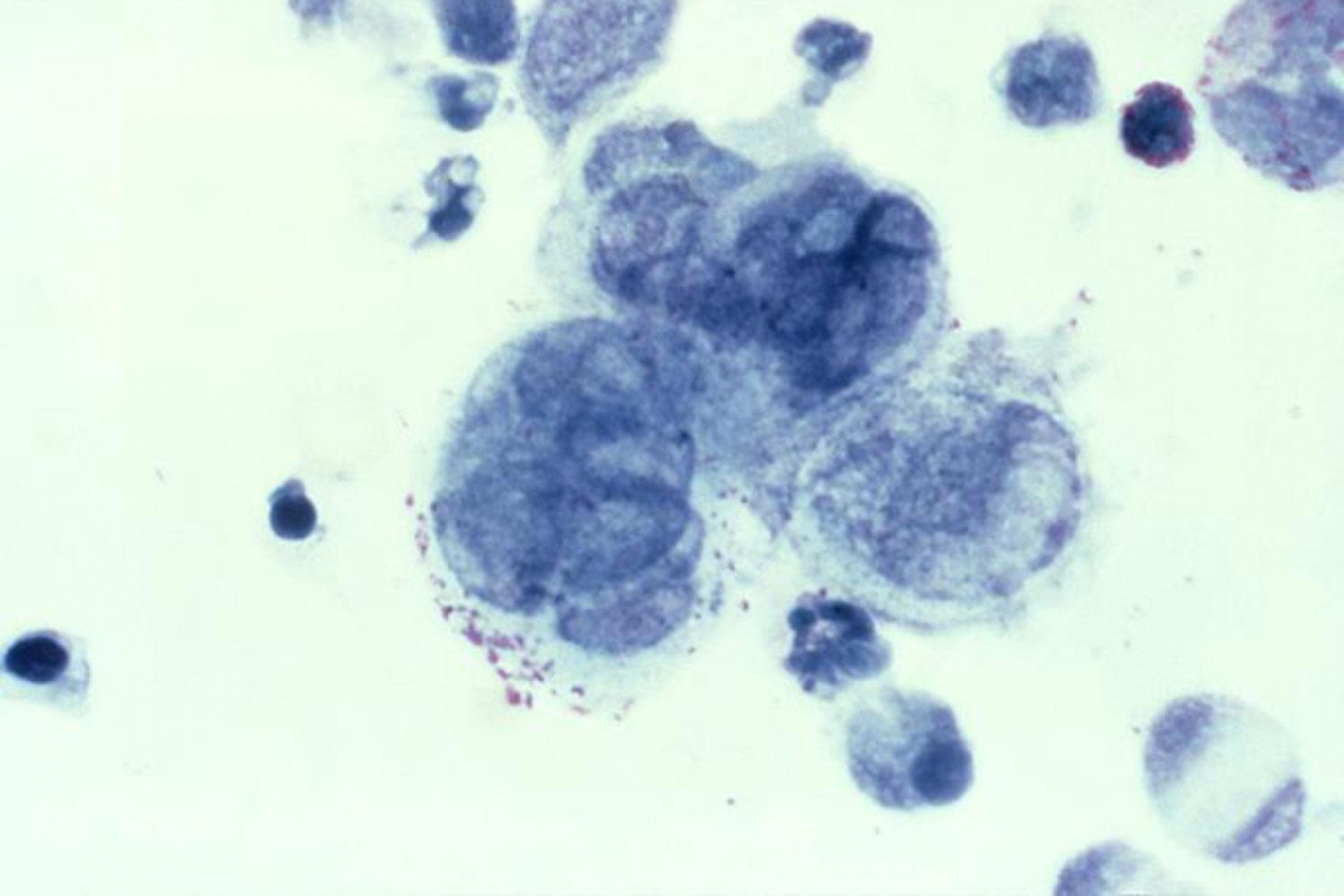


 9:15:26
9:15:26  2019-01-01
2019-01-01  1682
1682

Going viral
Viruses were discovered in 1892, and yet even in 2018, researchers are still uncovering new secrets about these infectious invaders. Viruses are not quite living things and have no way to reproduce on their own. Instead, they're made of genetic material, usually DNA or its chemical cousin RNA, that's wrapped in a protein coating.Because of their ability to integrate their genetic code into the code of their host, viral genes are found hidden in the genes of many living things, including humans. But exactly how and why viruses work their genetic tricks remains a mystery that researchers working in a wide range of fields, from evolutionary biology and molecular biology to neurology and the study of chronic diseases, are trying to solve.
Here are six new things scientists have recently learned about viruses.
An ancient virus in the human brain
The neurons of animal brains, including human brains, hold the genetic remnants of an ancient viral infection that may be key to how thought processes work, researchers reported in two papers in the journal Cell in January. The researchers discovered that a gene called Arc, which is found in four-limbed animals, is a genetic code leftover from an ancient virus. Moreover, they found that this gene is crucial to nerve cells' ability to build certain types of tiny packages of genetic material and send them off to other nerve cells. This process explains how nerve cells exchange the information that is needed for reorganization of cells.
Brain functions including conscious thought and the concept of the "self" may only be possible because of this process, the researchers said. And if the process does not work properly, the synapses, or the junctions between the neurons, may become dysfunctional. More research is needed to understand how the Arc gene became a part of the animal genome, and exactly what information is passed from one neuron to another because of instructions from Arc, they said.
Viruses are literally falling from the sky
A long-standing mystery about viruses finally got an answer in 2018: The reason why viruses that are genetically similar to each other can be found great distances apart on Earth is that viruses travel through the atmosphere on air currents. In a paper published in January in the Multidisciplinary Journal of Microbial Ecology, researchers reported that viruses can hitch rides on particles of soil or water and swing high into a layer of the atmosphere called the free troposphere, and then eventually plop down in a completely new spot.
The researchers also found that when viruses reach the level of the free troposphere, which is found approximately 8,200 to 9,800 feet above Earth's surface, they can travel much farther than would be possible at lower altitudes. It turns out that the free troposphere is teeming with viruses, and due to the action of the air currents within it, a given square meter of Earth's surface may be showered with hundreds of millions of viruses in a day, the researchers said.
Alzheimer's disease and viruses
The theory that viruses may play a role in Alzheimer's disease received more support from a study published in June in the journal Neuron. Researchers looked at nearly 1,000 postmortem brains from multiple brain banks, including brains from people with and without Alzheimer's disease. They sifted through genetic sequences taken from these brain tissues and identified which of the sequences were human and which were not. They found that the brains of deceased people with Alzheimer's disease had up to twice the level of two common strains of herpes viruses, compared with the non-Alzheimer's brains.
It isn't exactly clear what role the virus may play in the development Alzheimer's, the researchers noted. The viruses could be part of the cause of the disease, or they could just speed up the progression of it. But it is also possible they don't play a role in the disease at all, and are found in people with Alzheimer's for some other reason, the researchers said.
Giant viruses invent their own genes
Giant viruses, which are more than twice the size of typical viruses, have complex genomes. In June, researchers reported that the so-called orphan genes that are found only in giant viruses called Pandoraviruses actually originated in the viruses themselves. In fact, the researchers found that although random mutations are common in nature, these viruses are unusually prolific in their creation of new genes. Moreover, the orphan genes that Pandoraviruses have created differ among the viruses, which means that it is unlikely that the genes originated in a viral ancestor, the researchers said. Exactly why Pandoraviruses seem to regularly generate new genes and proteins isn't clear, but the discovery could change how researchers approach studying this virus family. Future research should focus on finding the mechanisms that drive Pandoraviruses' processes for inventing new genes and identifying the forces of evolution that drive these viruses.
Viral genes may play a role in addiction
A long-ago viral infection may play a role in today's human drug addiction. Researchers reported in September in the journal Proceedings of the National Academy of Sciences that genetic traces from a virus called HK2 were more common in people with drug addictions than in people without addictions. The remnants of the HK2 virus are found in only 5 to 10 percent of people, which points to a relatively recent viral infection, perhaps one that occurred about 250,000 years ago, as the culprit, the researchers said. In today's humans, the genetic information left over from the virus may play a role in the release of the neurotransmitter dopamine, which is important in how the brain responds to pleasure, the researchers said. More research is needed to determine exactly how the HK2 traces may influence people's addictive behaviors, they said.
Wake up, herpesvirus!
Herpes simplex virus infections are common, with more than 80 percent of the world's people infected with herpes simplex virus (HSV). The virus often remains in a dormant mode in the body, which is beneficial to people who are infected because the virus doesn't cause symptoms while dormant. However, it's also harder for the immune system to find and eliminate the virus while it is dormant.
In October 2017, researchers reported in the journal PLOS Pathogens that they had figured out how to induce the virus to enter its dormant mode, and had also found the key proteins that are involved in waking it up. The findings may have implications for treating or preventing herpes infections, the researchers said. The results could point towards ways to target certain viral proteins to prevent viruses from waking up, thus preventing symptoms and the spreading of the virus to other people, or could lead to ways to get the virus to remain "awake," so that the immune system could eliminate it, the researchers said.
Reality Of Islam |
|

A new study

Researchers

A new chip-

A large inf
 9:3:43
9:3:43
 2018-11-05
2018-11-05
10 benefits of Marriage in Islam
 7:5:22
7:5:22
 2019-04-08
2019-04-08
benefits of reciting surat yunus, hud &
 9:45:7
9:45:7
 2018-12-24
2018-12-24
advantages & disadvantages of divorce
 11:35:12
11:35:12
 2018-06-10
2018-06-10
 6:0:51
6:0:51
 2018-10-16
2018-10-16
 5:57:34
5:57:34
 2023-03-18
2023-03-18
 4:26:43
4:26:43
 2022-02-21
2022-02-21
 5:58:12
5:58:12
 2021-12-18
2021-12-18
 7:45:39
7:45:39
 2018-06-21
2018-06-21
 10:47:11
10:47:11
 2022-11-22
2022-11-22
 10:43:56
10:43:56
 2022-06-22
2022-06-22
 2:13:43
2:13:43
 2022-05-27
2022-05-27
 5:41:46
5:41:46
 2023-03-18
2023-03-18
| LATEST |